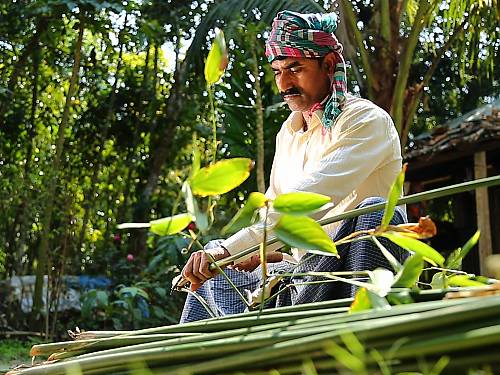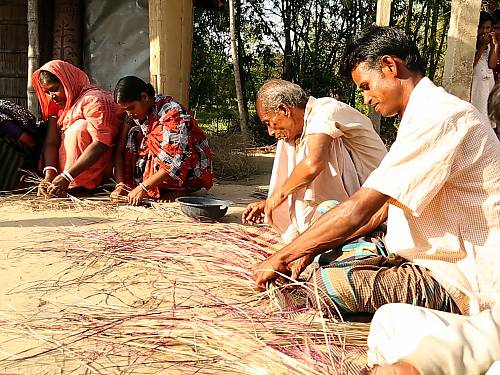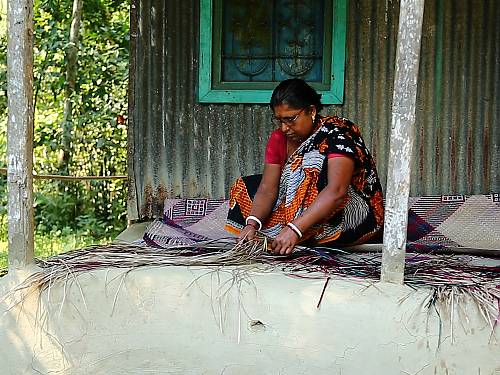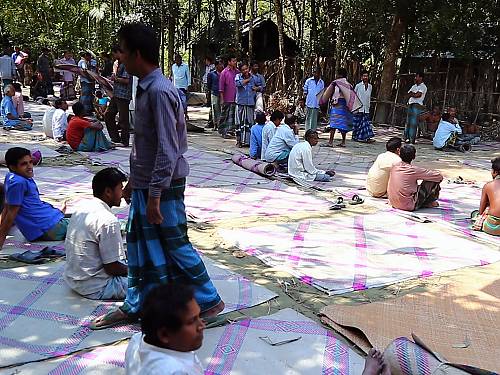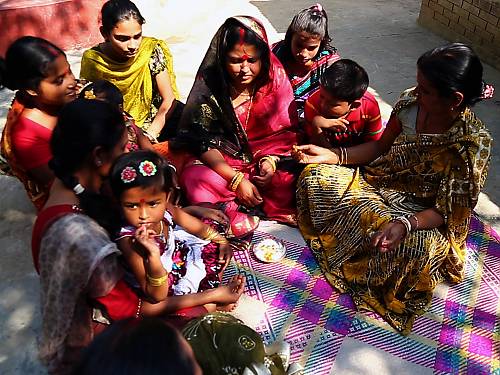Traditional art of Shital Pati weaving of Sylhet
Inscribed in 2017 (12.COM) on the Representative List of the Intangible Cultural Heritage of Humanity

Shital Pati is the traditional art of making a handcrafted mat by weaving together strips of a green cane known as ‘Murta’. The mat is used by people all over Bangladesh as a sitting mat, bedspread or prayer mat. The main bearers and practitioners are weavers living mostly in the low-lying villages in the greater Sylhet region of Bangladesh, but there are also pockets of Shital Pati weavers in other areas of the country. Both men and women participate in collecting and processing Murta, with women being more involved in the weaving process. The craft is a major source of livelihood and a strong marker of identity; primarily a family-based craft, it helps to reinforce family bonding and create a harmonious social atmosphere. Mastery of the technique commands social prestige, and the practice empowers underprivileged communities, including women. The government promotes awareness of the element through local and national craft fairs, and Shital Pati communities are increasingly being organized into cooperatives to ensure the efficient safeguarding and transmission of the craft and guarantee its profitability. Safeguarding efforts involve the direct participation of the communities concerned and the practice is primarily transmitted from generation to generation within the families of craftspeople.
